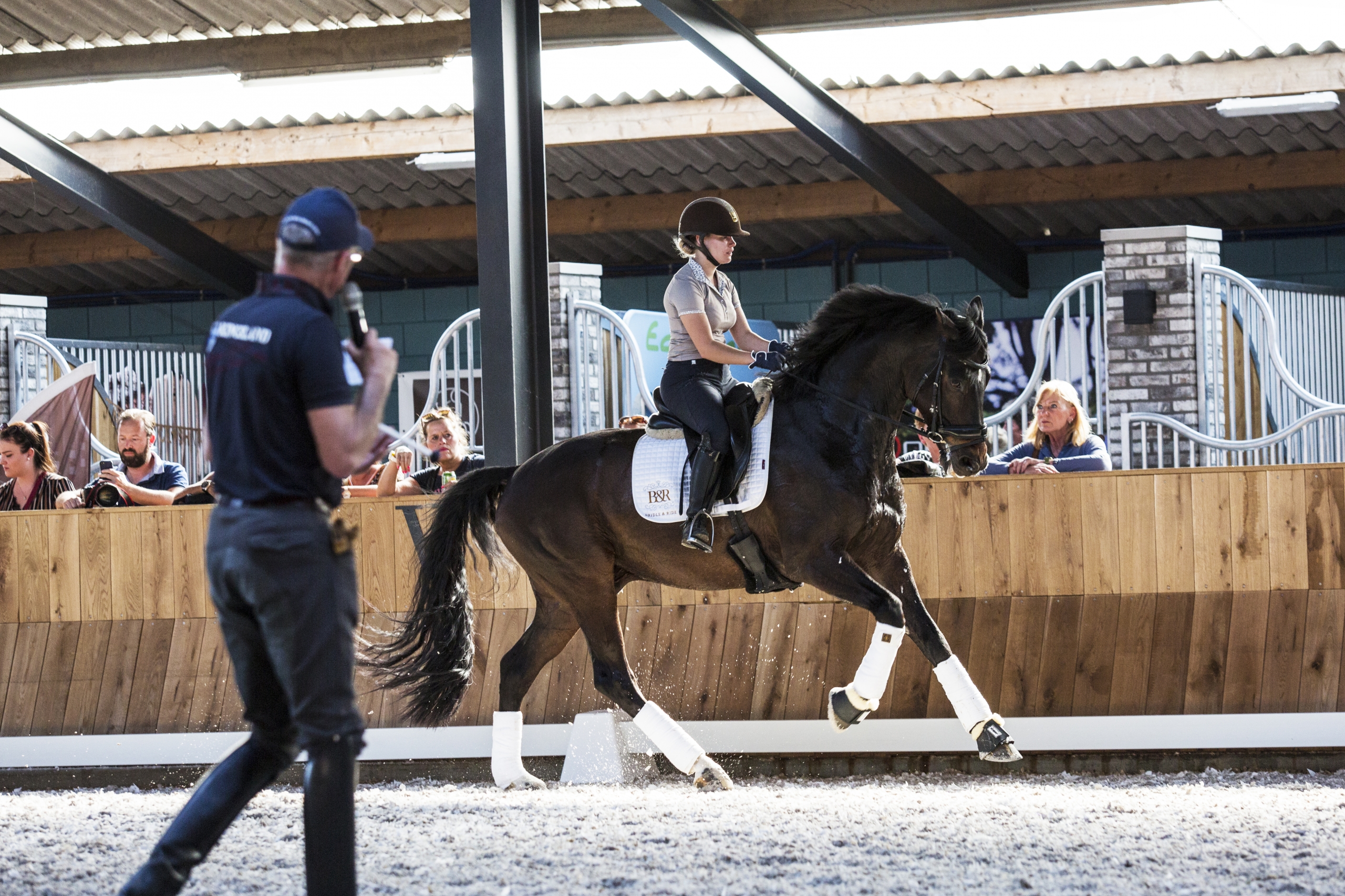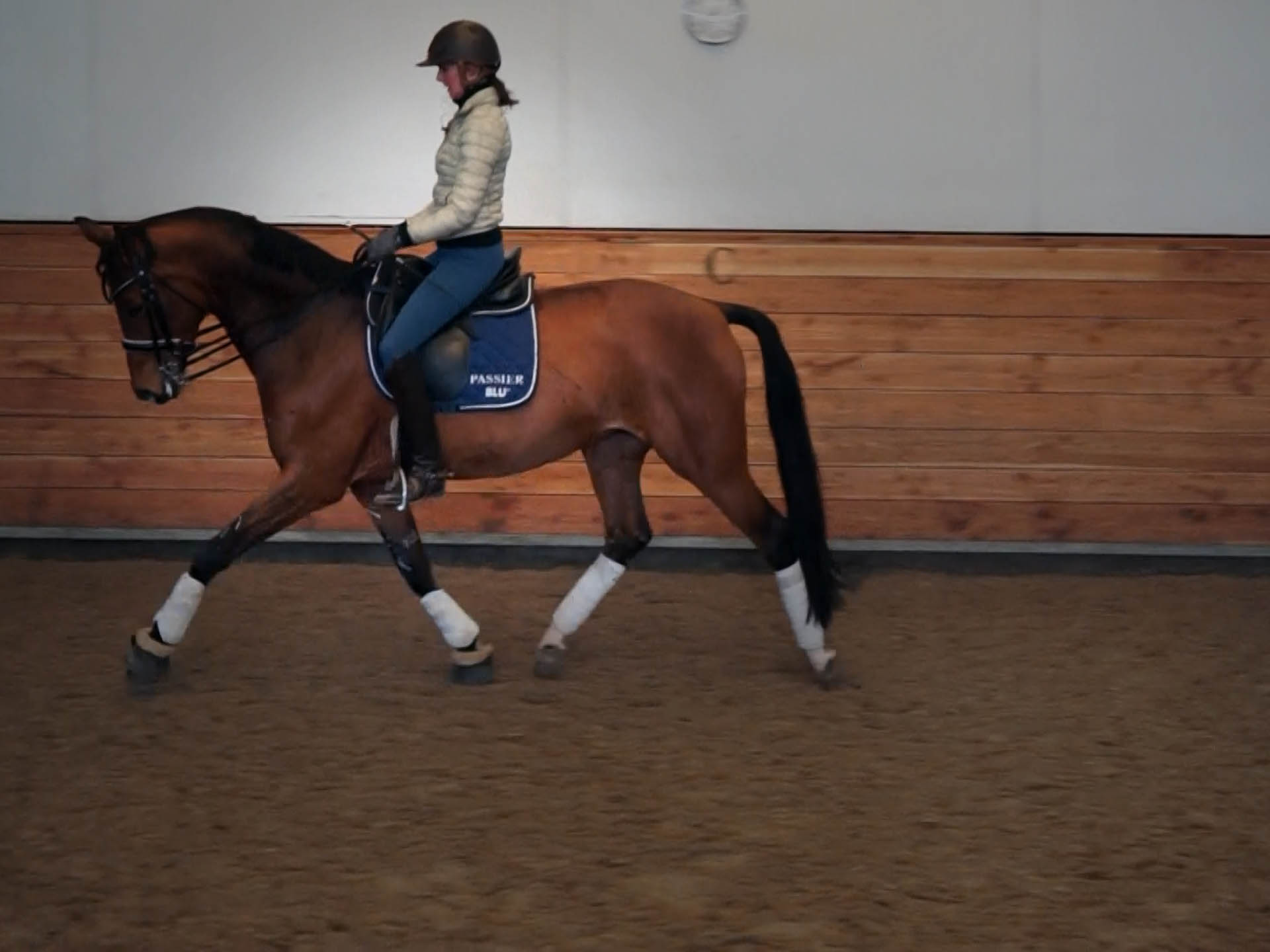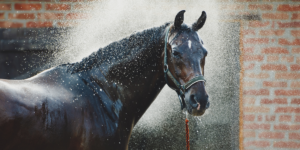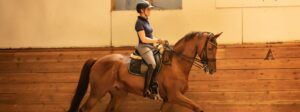A successful training session starts with warming up your horse in the right way.
If you warm up well, your horse will be supple and respond actively to your aids.
Besides, warming up correctly is crucial if you want to prevent injuries!


But what’s the right way to warm up your horse?
Maybe you find it difficult to determine which way of warming up suits you and your horse best. Because how long should the warm-up last? Which exercises do you ride? And which ones shouldn’t you do? In fact, the warm-up depends on our horse and his level. However, there are some general rules for everyone. Many riders are extremely busy with ‘how low’ their horse’s heads should be during the warm-up. And that leads me to the first point of attention:#1 Warm up your horse in his natural balance
If you warm up your horse, ride him in his natural balance without asking for a frame. This means that you ‘simply’ ride your horse towards your hand, and that you leave your horse in his natural balance where he feels comfortable. With a younger, less experienced horse this means that the balance will be placed on the forehand. But if you warm up a Grand Prix horse, you’ll notice that he starts off with a much better balance, because the natural balance of a horse evolves once he is further in his training. But the way of riding always stays the same. In both cases, the horse is ridden towards the hand and has the chance to warm up and get supple in his own balance. It’s super important to realize:Asking for a lower head-neck frame than the natural balance will lead to more weight on the forehand. This is a negative influence on the balance of your horse.
#2 First take care of the forward drive and relaxation
Often you’ll see that warming up equals strolling slowly around the arena for a little while. Of course, you need to give your horse the time to warm up, but you do want your horse to be responsive to the leg aids. Try to be consistent. For him, it’s very confusing if he doesn’t have to be responsive in the first 15 minutes, and then later on… he does have to respond.
#3 Ride your horse towards the hand and ensure he wants to accept it happily
It’s crucial to ride your horse towards the hand. You want to receive the forward drive with a friendly hand. Your horse should experience your hand as pleasant and accept it willingly. It’s possible to check this yourself by opening your hand. Does your horse has the tendency to follow your hand in a forward-downward direction? Then you know you’re on the right track! Does he come against the bit? Then you know the connection isn’t great yet, and you should try to establish the basic principles first.#4 Don’t ride short turns
Especially with a young horse, you don’t want to ride too many short turns and small circles during the warm-up. Why not? That requires more balance and bending. Besides, you first want to have forwardness and that’s easier when you ride long lines. First try to ride your horse forward on two reins, towards the hand, before you start riding many of turns. Do you have enough forwardness and a nice connection? Then you can start to influence and improve the left-right balance during the warm-up. Pay attention that you take both reins equally and, if you want more bend, try to bend the horse around the inside leg instead of only getting flexion in the neck. If you flex the neck too much, you’ll disturb the forward drive and won’t get bend through the whole body of your horse.
#5 Try to activate the haunches
If you have the basic principles under control during the warm-up, gradually you can start to activate the hind legs of your horse. For example, think of exercises like laterals in walk or a transition to trot in shoulder-in, etc. Leg yielding is also a very good exercise to get the horse more supple and loose over the topline.#6 Transition your warming up into the training
It might be needless to say that you shouldn’t skip the warm-up. However, it’s vital that you don’t see the warm-up and training as separate things. In fact, the warm-up transfers into the rest of the training. For one rider this means establishing the three basic principles. And for the other rider, it means working on positively influencing the balance and collecting their horse. However, you’ll never start doing something completely different after the warm-up, but more like picking up where you left at the warm-up.#7 Plan your breaks at the right time
When do you give your horse the first break after you started your warm-up? If it’s still a challenge to find a nice connection, it would be a shame to give your horse long rein at the moment you almost accomplish this connection. You would rather want to ride on a few more rounds, in order to establish this connection a little bit better before giving your horse a break. So keep this in mind during your warm-up.#8 Extra: Trot-canter and canter-trot transitions
These transitions are very useful when warming up your horse. They help your horse get more supple and loose over his topline. Try to do these canter transitions during your warm-up.Hopefully, these tips have helped you to warm up your horse better.
Let us know by leaving a reply below!





8 Reacties
Very good! I try to ride my horse a lot like this and this article made me realise Im on the right track! He is currently injured but when getting back into work I will keep this top of mind! ??
Interesting info great to receive these hints
I have a young horse who’s is very enthusiastic and forward going. She tends to solve any challenges by running a little faster / running through my aids and half halts.
What would be your recommendation for warming up a horse like her?
Hi
Thanks for these tips I only read it partially before schooling today however what I did use worked really well.
Thank you
Claire
I really enjoy getting these tips. I think they are helpful and good reminders. thank you
I find these tips very easy to understand and remember. Due to other commitments I’m only able to school once or twice a week. Hoping over time, our training will improve :))
One of the most sensible warm up routines of read in a very long time. Thanks for sharing.
Its a great post! Thanks for sharing